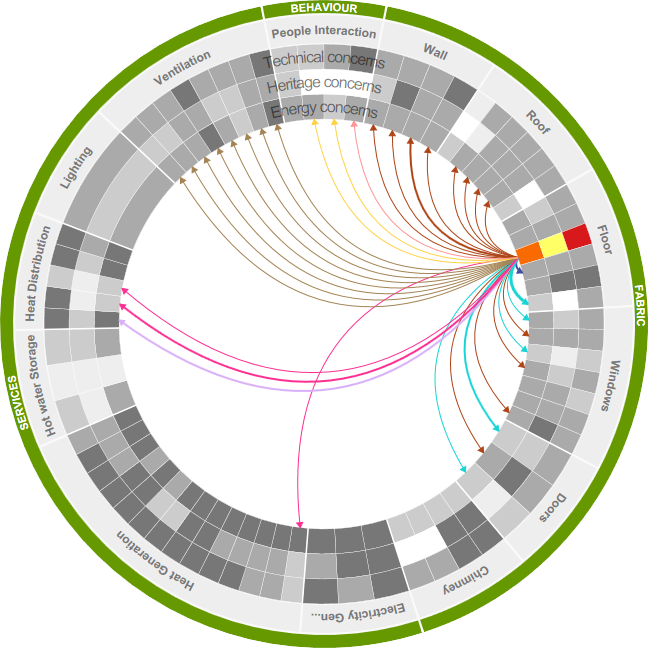MEASURE: Passive stack ventilation with demand control ventilation
Review of natural ventilation strategy to ensure sufficient ventilation is provided. This strategy uses either air pressure or temperature difference to draw in fresh air (at wall or window vents) and extract stale air to the outside (through passively operated extract terminals located in wet rooms). Demand Control Ventilation (DCV) adds a method of control of the ventilation system by demand factors (e.g. humidity, occupancy, presence of VOCs) as required by the specific use of the space. Windows can be opened for rapid purge ventilation
Monitoring & feedback recommended: Yes
ADVANTAGES
Simplicity; no energy in-use; silent operation; air flow maintained at adequate levels when it is needed but possible to reduce air flow when not required. This results in energy saving without compromising the air quality
CONCERNS & ACTIONS
 TECHNICAL (7)
TECHNICAL (7)
 ENERGY (2)
ENERGY (2)
RELATED MEASURES
 FABRIC (25)
FABRIC (25)
External Wall insulation
Internal Wall insulation
Frame infill insulation
Loft insulation
Rafter insulation
Flat roof insulation
Room in roof insulation
Loft hatch and ceiling airtightness
Floor insulation between/under floor joists
Floor Insulation on top of existing floor finish
Floor void filled with insulation
Exposed soffits to upper floors: Insulation in between joists or under soffit
Replacement of existing ground floor with new concrete insulated solid ground floor
Increased Floor airtightness
Window draughtproofing
Energy efficient glazing
Window refurbishment
Secondary glazing
Window Replacement
Door draughtproofing
High performance doors
Door refurbishment
Chimney blocking
Reduced air flow
 SERVICES (6)
SERVICES (6)
CASE STUDIES (1)
Conversion of methodist chapel
Isabel Carmona

